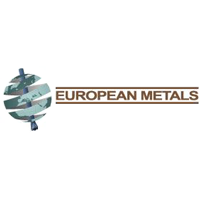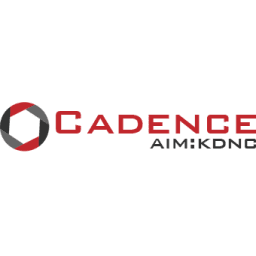European Metals Holdings Limited ORD NPV (DI) (LON:EMH) Managing Director Keith Coughlan caught up with DirectorsTalk to discuss the interim upgrade to the Cinovec lithium/tin project, the progress of the feasibility study, relative value and the main reasons for investors to invest in EMH
Q1: Now Keith, you’ve just announced an interim upgrade of your minerals resources at the Cinovec lithium/tin project. This is a very large upgrade to the indicated lithium resource, what exactly does this mean?
A1: You’re right Giles, it is a large upgrade and it’s an upgrade that we’ve been flagging to the market for some time now. There has been a lot of historic work at Cinovec, a lot of drilling over 80,000 metres and there’s a lot of data that we have with regards to the ore body but unfortunately we don’t have the core. So given all that data and all the work that we’ve done we’ve had a fairly high level of confidence for some time that the drilling that we’ve done would bring a significant portion of the inferred resource into the indicated category and happily that’s been demonstrated with today’s announcement.
I think that level of confidence will remain going forward, we’ll continue drilling, continue working on the ore body and when we conclude the PFS at the end of March I believe we’ll have another upgrade of the ore body and hopefully we get a similar sort of increase in the indicated resource. So what the results today do is that effectively underpins our preliminary feasibility study so it provides a lot greater confidence in the ore body and that should provide increased value as a result.
Q2: How is the feasibility study progressing?
A2: Well it’s progressing very well, we’ve made a series of announcements with regards to certain inputs into that PFS, today is an example. Previously we announced some very good results with regards to improved recovery at the front end of the lithium separation and all of those factors will contribute to make a positive PFS I believe. So apart from that we’ll soon be able to announce the full net results which I think the market’s waiting on seeing and we’re also continuing work on mine design and that sort of thing so the PFS is on target for completion end of Q1 2017 and it appears to be going very well.
Q3: Now, in your recently released presentation you showed a slide of relative value which had European Metals Holdings as the cheapest lithium stock. What do you think that implies and how do you unlock some of that relative value?
A3: Ok, so the chart you’re referring to I think was produced by Edison Research and Edison are completely independent of us, we don’t pay them for any research of anything like that. So they done, obviously, a lot of work on this sector and happily come to the same sort of conclusion that we’ve been saying for some time.
On this yard stick, on this measurement, European Metals is very undervalued relative to the sector, relative to its peers so what the chart shows is enterprise value per tonne of contained lithium and as you can see from that chart we are very low compared to a number of the others. So I think that gives us some room for some significant re-rating and I think things like today’s announcement and some others to come will also provide fuel for that re-rating as we de-risk the project, bring out the confidence curve and I think that the opportunity for us to derive a better enterprise value per tonne of resource becomes very real.
Q4: What do you think are the 3 main reasons for investors to invest in European Metals Holdings Limited ORD NPV (DI)? What should they be looking at?
A4: The 3 main reasons, and that presentation you mentioned highlights this in the first slide, we say that Cinovec is a globally significant resource and it’s globally significant for predominantly 3 factors; firstly, the size of the resource, secondly the fact that it’s very likely to be a low cost producer, which is largely due to bi-product credits and thirdly, simply its location.
Firstly the size, the project is the largest lithium resource in Europe, it’s about the fourth largest non-brine resource in the world and as we saw with today’s announcement it’s actually proving to getting bigger. It’s also a very large undeveloped tin resource and that’s becoming more and more important if you watch the tin price, it’s had a very good run on the LME this year, I’ve seen various bits of research suggesting that that’s likely to continue, I hope that research if correct.
The tin bi-product credits to Cinovec will become more and more important and that has the effect of reducing our cost of production per tonne of lithium carbonate. So both of those things are very important.
The third thing I mentioned was where it’ located in the middle of Europe. I think we’re seeing enormous increase in the demand for lithium in Europe as is evidenced from the announcements of all of the major European car manufacturers led by Volkswagen really saying they’ll provide 2-3 million EV’s by 2025 which is a high increase in the number of electric vehicles on the road. Incidentally, they suggest that if they do hit those targets they’ll account for about 25% of the EV market in Europe so you’re talking about a lot of new EV’s in Europe but also battery manufacturers are now starting to build new battery factories in Europe; LG, Samsung and even Tesla are talking about its second gigafactory in Europe and there’s even talk that that may be in the Czech Republic. On top of that you’ve got various European governments, most notably the German government, making announcements about their support for electric vehicles, the German government have said they’ll spend €1 billion on subsidies for the buyers of electric vehicles, they’ll also spend €300 million on rolling out an EV infrastructure throughout Germany, things like charging stations. Most recently, a couple of weeks ago, the amazing announcement from the German government was that they’ll be a ban on new petrol and diesel cars in Germany from the year 2030 on and that’s an amazing thing for the German government to say and I think it points to very strong increase in demand for electric vehicles and therefore for lithium, in Europe.
Europe has always been the second largest importer of lithium in recent years but there is no production of battery-grade lithium compound in Europe whatsoever and hopefully we’ll be the first to that mark and therefore be in a good position to deliver lithium into the European market for some time to come.


